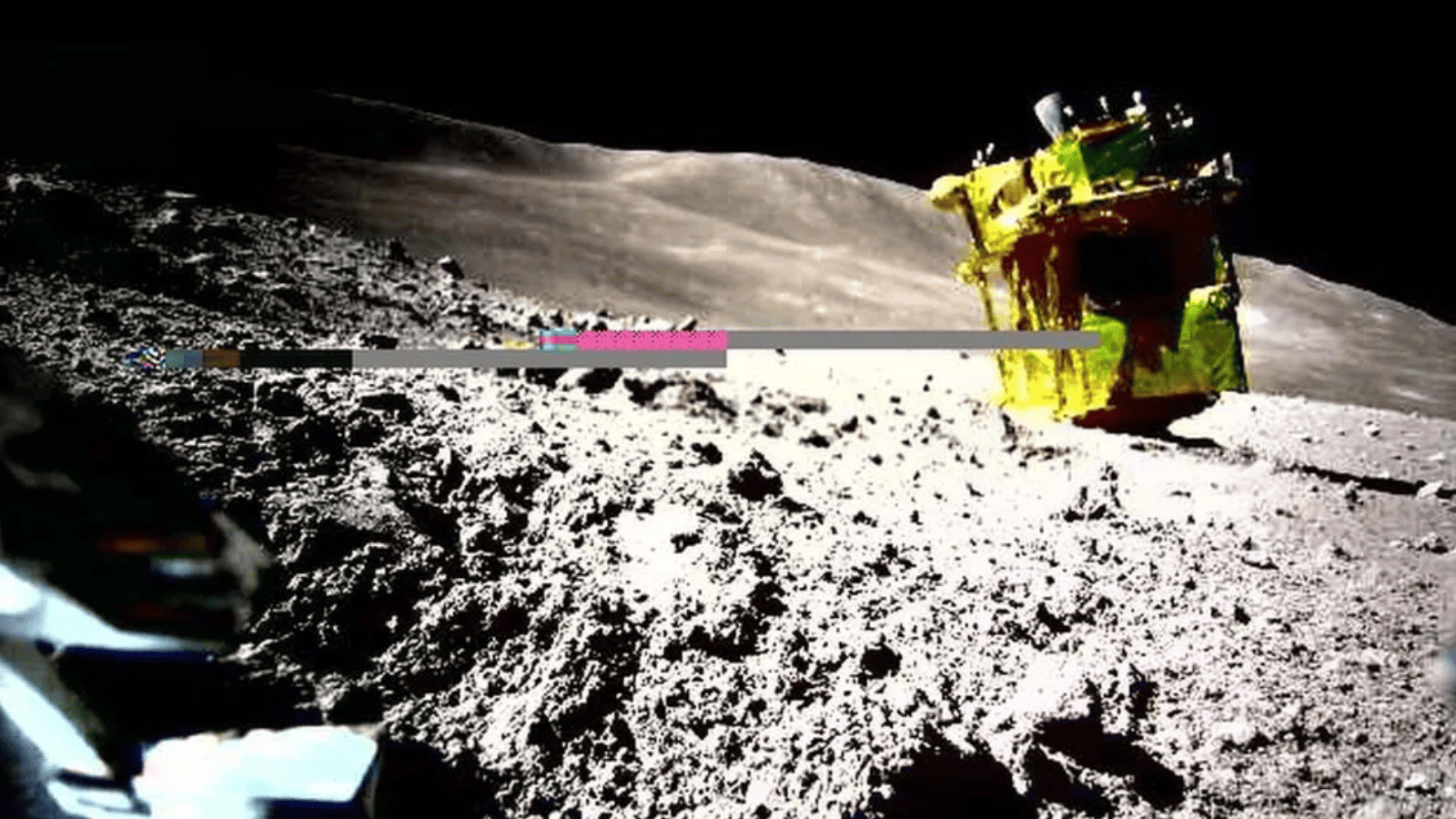
The Japan Aerospace Exploration Agency’s (JAXA) Moon lander, the Smart Lander for Investigating Moon (SLIM), has reignited its lunar mission after an awkward start. JAXA confirmed a suspenseful week-long power outage is now over after SLIM’s upside-down landing due to an engine failure.
After SLIM’s January 20 touchdown on the Moon, JAVA found that the lander’s solar cells, crucial for its power supply, were misaligned with the Sun. This left the lander in an energy lull. However, after an area lighting change, the lander soaked up enough rays to breathe life back into the mission.
“We immediately started scientific observations with MBC (Multi-Band Camera), and have successfully obtained first light,” read a JAXA statement.
The MBC’s purpose is to search the lunar surface for olivine by examining the spectra, or light signatures, of reflected sunlight. Olivine may hold the key to developing rocky worlds like ours early in the solar system. In addition to being a major component of the Earth’s mantle, SELENE data shows the mineral is also abundant in lunar regions where the crust is relatively thin. One of those areas is the Moon’s south pole, where astronauts will be sent later in the 2020s by NASA, Japan, and a coalition of other countries under the American-led Artemis Accords.
SLIM landed just 180 feet (55 meters) from Shioli Crater, located inside the Mare Nectaris, or Sea of Nectar, a region full of ancient impact debris. The mission’s landing site is located approximately 200 miles (322 kilometers) south of Mare Tranquillitatis, also known as the Sea of Tranquility.
This feat propels Japan into an elite circle of nations — including the United States, the former Soviet Union, China, and India — that have achieved the delicate art of soft lunar landings. After its arrival on the Moon, SLIM operated on limited battery power before JAXA temporarily shut it down. This strategic move aimed to conserve energy, with the team eagerly awaiting a favorable solar angle for reactivation.
Currently, JAXA is now “sorting out rocks of interest, assigning a nickname to each of them, with the intent of communicating their relative sizes smoothly by the names,” officials added in an English-language press release. So far, JAXA has shown an affinity to canines, coming up with names such as “Toy Poodle”, “Bulldog”, and “St. Bernard”. This light-hearted moment underscores a serious scientific endeavor. SLIM’s ultimate mission is to analyze lunar rock compositions to unravel the Moon’s mysterious origins and complex geological history.
Recent moon landing attempts have been mixed. Before Japan’s success, India’s Chandrayaan-3 was the most recent to join the exclusive five-country club, marking a historic landing near the lunar south pole in August 2023. However, a May landing attempt by Japanese startup iSpace, ended in disappointment as an altitude miscalculation caused the craft to run out of fuel before reaching the surface.
SLIM’s operational tenure on the Moon is up for debate due to the 14-day lunar nights. Currently, JAXA isn’t sure SLIM can stand up to the real shady parts of the Moon for that extended time.










